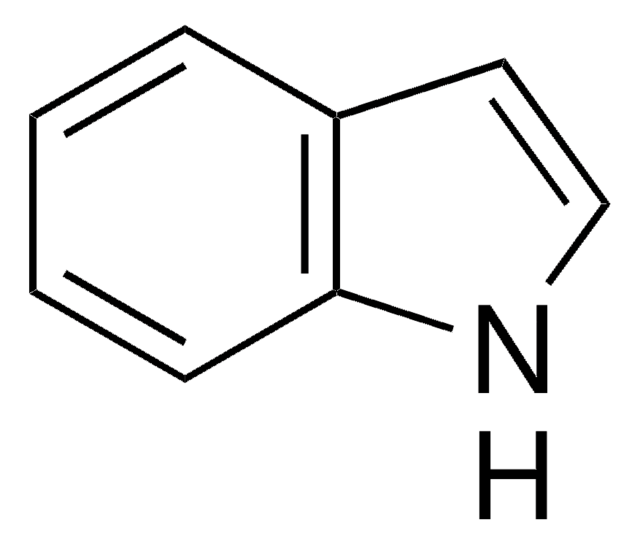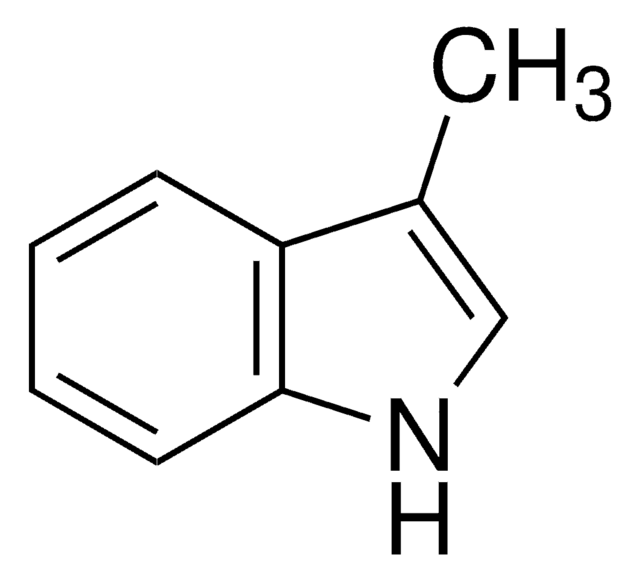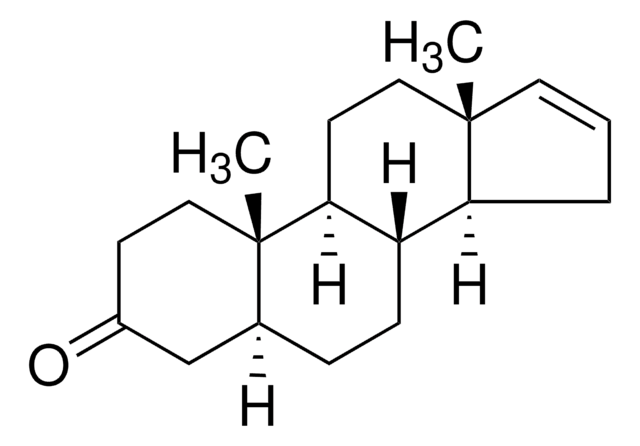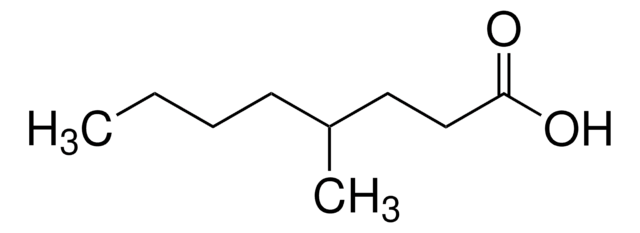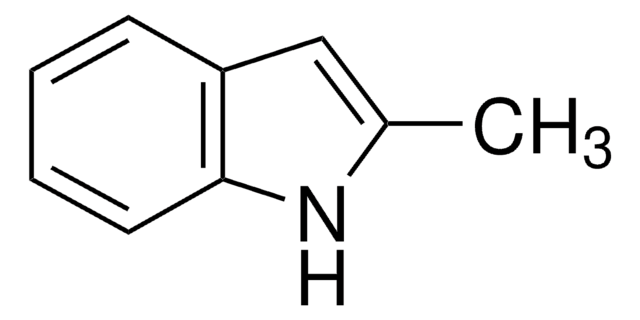W301912
Skatole
≥98%
Synonym(s):
3-Methylindole, Skatole
Sign Into View Organizational & Contract Pricing
All Photos(1)
About This Item
Empirical Formula (Hill Notation):
C9H9N
CAS Number:
Molecular Weight:
131.17
FEMA Number:
3019
Beilstein/REAXYS Number:
111296
EC Number:
MDL number:
UNSPSC Code:
12164502
PubChem Substance ID:
Flavis number:
14.004
NACRES:
NA.21
Recommended Products
biological source
synthetic
agency
meets purity specifications of JECFA
assay
≥98%
bp
265-266 °C (lit.)
mp
92-97 °C (lit.)
application(s)
flavors and fragrances
documentation
see Safety & Documentation for available documents
food allergen
no known allergens
organoleptic
animalic
SMILES string
Cc1c[nH]c2ccccc12
InChI
1S/C9H9N/c1-7-6-10-9-5-3-2-4-8(7)9/h2-6,10H,1H3
InChI key
ZFRKQXVRDFCRJG-UHFFFAOYSA-N
Looking for similar products? Visit Product Comparison Guide
General description
Skatole is an indole derivative with a strong fecal odor that occurs naturally in feces formed due to the degradation of tryptophan. It is found in several flowers such as jasmine owing to its flowery smell when present in low concentration. Skatole is also one of the key contributors to the development of boar taint in fat samples.
Application
- Microbiome-metabolomics analysis reveals abatement effects of itaconic acid on odorous compound production in Arbor Acre broilers.: Investigates the impact of itaconic acid on the microbiome and metabolomics profiles of broilers, significantly reducing skatole production, which is a key contributor to odors in poultry (Zhu et al., 2023).
- Postmortomics: The Potential of Untargeted Metabolomics to Highlight Markers for Time Since Death.: Discusses the potential of untargeted metabolomics in forensic science to identify time-since-death markers, including skatole, which is relevant in decomposition studies (Pesko et al., 2020).
- A versatile method for producing labeled or unlabeled Aß55, Aß40, and other ß-amyloid family peptides.: This article describes methods for producing peptides in biochemistry, including skatole, used in research contexts related to protein misfolding diseases (Zerweck et al., 2019).
- Chemical-Mediated Digestion: An Alternative Realm for Middle-down Proteomics: Explores alternative methods for protein digestion in proteomics, using chemical mediators including skatole to facilitate the process, offering new avenues for the study of protein structures and functions (Srzentic et al., 2018).
Disclaimer
For R&D or non-EU Food use. Not for retail sale.
hcodes
pcodes
Hazard Classifications
Aquatic Chronic 2
Storage Class
11 - Combustible Solids
wgk_germany
WGK 2
flash_point_f
269.6 °F
flash_point_c
132 °C
Choose from one of the most recent versions:
Already Own This Product?
Find documentation for the products that you have recently purchased in the Document Library.
Customers Also Viewed
Skatole (2010)
Walter S Leal et al.
PloS one, 3(8), e3045-e3045 (2008-08-30)
Synthetic mosquito oviposition attractants are sorely needed for surveillance and control programs for Culex species, which are major vectors of pathogens causing various human diseases, including filariasis, encephalitis, and West Nile encephalomyelitis. We employed novel and conventional chemical ecology approaches
Putative mechanisms of toxicity of 3-methylindole: from free radical to pneumotoxicosis.
T M Bray et al.
Annual review of pharmacology and toxicology, 34, 91-115 (1994-01-01)
U Weiler et al.
Animal : an international journal of animal bioscience, 7(2), 300-308 (2012-10-04)
Feed intake behavior was studied between 9 weeks of age and slaughter in a total of 36 gilts, 32 immunocastrates, 33 surgically castrated barrows and 33 boars from 36 litters. Consequences for the concentration of substances contributing to off odor
P K Mathur et al.
Meat science, 91(4), 414-422 (2012-03-23)
A system for sensory evaluation of boar taint was used to evaluate boar taint in fat samples from 6574 entire males. The term "human nose scoring" has been used to describe this system. The samples from each boar were heated
Our team of scientists has experience in all areas of research including Life Science, Material Science, Chemical Synthesis, Chromatography, Analytical and many others.
Contact Technical Service